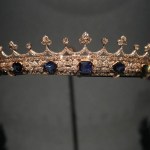In a new study, University of New South Wales professor Mike Archer and colleagues re-examined a fossilized tibia (tibia bone) from the now extinct giant stenurine kangaroo. A bone found in Mammoth Cave in southwest Australia around the time of World War I was later recognized as compelling evidence that Indigenous Australians hunted megafauna. Professor Archer participated in 1980 study the discovery of a distinctive cut on the fossilized bone was evidence of a massacre. But he now happily admits that this initial conclusion was wrong.
Megafaunal animals from Mammoth Cave about 50,000 years ago: giant long-beaked echidna. Murrayglossus hackettigiant kangaroo Procoptodon browngiant diprotodontid Zygomaturus trilobusand thylacine (Thylacinus cynocephalus). Image credit: Peter Schouten.
“As a scientist, it's not just my job, but my responsibility to update the data as new evidence becomes available,” Professor Archer said.
“Back in 1980, we interpreted the cut as evidence of a massacre because that was the best conclusion we could make with the tools available at the time.”
“Thanks to advances in technology, we now see that our original interpretation was wrong.”
“When the bones were analyzed starting in the 1960s, there was much debate about whether the First Peoples lived compatible with Australia's prehistoric megafauna or whether they were responsible for the extinction of these megafauna.”
“Many believed that the cut on the bone was made by humans using tools – and that this finally showed that the extinction of megafauna and the emergence of humans around 65,000 years ago was not a coincidence.”
“For decades, the Mammoth Cave bone was the 'smoking gun' for the idea that Australia's first peoples hunted megafauna, but now that this evidence has been disproved, the debate about what caused the extinction of these giant animals is wide open again, and the role of humans is less clear than ever.”
To re-analyze the same cut-up stenure leg bone, Professor Archer and co-authors used high-tech 3D scanning to look inside the bone without damaging it.
They also used updated radiometric dating technology to try to determine how old the bone and slice actually were, and carried out detailed microscopic analysis of the cut surfaces.
Their analysis showed that the cut was made after the bone had dried and developed shrinkage cracks—meaning it was likely already fossilized when the cut was made.
Paleontologists also analyzed a fossil tooth “amulet” given by a Worora tribe member from the Mowanjum Mission to Kim Ackerman, an archaeologist who worked with indigenous people in the Kimberley in the 1960s.
The tooth belonged Zygomaturus trilobusa type of giant marsupial, distantly related to wombats, that was part of the Pleistocene megafauna of Australia.
Although the tooth was discovered in Kimberley, in north-west Washington State, its characteristics and composition were very consistent with other fossils from Mammoth Cave in south-west Washington State.
“The presence of the tooth in the Kimberley, far from its likely origin in Mammoth Cave, suggests it may have been transported by people or traded over vast distances,” said Dr Kenny Travouillon, a researcher at the Western Australian Museum.
“This implies cultural recognition or symbolic use of fossils long before European science did.”
“It could be said that the First Peoples may have been the first paleontologists on the continent, and perhaps the world.”
Researchers have not completely ruled out the possibility that the first peoples hunted Australia's megafauna.
But without hard evidence, it is impossible to say definitively that Indigenous Australians are responsible for its disappearance.
“While these are hypotheses, strong evidence is needed before it can be concluded that Indigenous predation of now-extinct megafaunal species contributed to their extinction, particularly given the long history that Indigenous peoples have had in the assessment and sustainable use of wildlife in Australia,” Professor Archer said.
“If humans were truly responsible for the unsustainable hunting of Australian megafauna, we would have expected to find much more evidence of hunting or butchering of the animals in the fossil record. Instead, all we ever had as hard evidence was a single bone, and now we have strong evidence that the cut was not made while the animal was alive.”
So, if humans are not solely responsible for the extinction of Australia's ancient megafauna, what could have caused it?
The researchers provide evidence that many megafauna species disappeared long before humans arrived, while others coexisted with humans for millennia, but their disappearances often coincide with periods of significant climate change.
“We can conclude that the first people in Australia to have a keen interest in and collected fossils were the first peoples, probably thousands of years before Europeans set foot on this continent,” the researchers said.
Their paper was published in the magazine Royal Society Open Science.
_____
Michael Archer etc.. 2025. Australia's First Peoples: Hunters of Extinct Megafauna or Australia's First Fossil Collectors. R. Juice. Open Science 12 (10): 250078; two: 10.1098/rsos.250078








